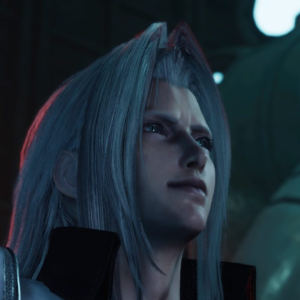Final Fantasy IV: The After Years and the World of Imbalance
I'll do my best to not be spoiler-y, but in order to write about the flaws of The After Years, I'll have to be explicit at times. So keep in mind that by reading the following you may have certain plot points spoiled--but you would've probably figured them out on your own (I hope).
In my last post, I explained that I would go into greater detail about why Final Fantasy IV: The After Years is such a letdown; don't worry, I'll get to that soon. But first, it's important to note that the game isn't too shabby in its first two chapters. There are a few problems--mostly due to developer Matrix Software's complete lack of ambition--but the initial content starring Cecil and Rosa's son Ceodore amounts to an inoffensive treat for fans of the original game. In the early areas of The After Years, you're given a well-rounded party with diverse skills and abilities, and even though you're forced to revisit some old dungeons here and there (more on this later), it's somewhat interesting to take an entirely (or mostly) new crew through these familiar FFIV haunts.
When the sequel starts its viewpoint-switching gimmickry, though, things start to go a bit south. Final Fantasy IV's main cast members were never really meant to act alone; they each had individual strengths and weaknesses that worked well as a party package. Unfortunately, The After Years is built around devoting significant chunks of the game to single characters, and while they may meet up with their old 16-bit pals from time-to-time, the game does its best to pad out your group with new characters (some of them being former NPCs) whose meager and banal abilities do a lackluster job of balancing the game. But, to be fair, The After Years doesn't seem to give a damn about balance; the game see-saws between very easy and very hard, and never achieves a happy medium between the two. At the beginning of Kain's chapter, you're forced to cakewalk down Mt. Ordeals as swaths of enemies barely chip your armor, while the end of Rydia's Tale sticks you with a female duo who have nary a bit of white magic between them. I shudder to think what an entire chapter devoted to Edward entails.
The After Years tries to compensate for this lack of balance with a few new additions to the original FFIV formula, the most significant of which is the game's moon phase system. Every time you stay at an Inn, use a tent, or let a certain amount of time pass, the phases of the moon change, granting strengths and weaknesses to different battle options. It's an interesting idea, but easily manipulated due to the paltry cost of letting your party catch some Zs; most of the time, you'll end up cycling through 2-4 phases manually until you hit the one that's right for your current situation.
The After Years' other addition to FFIV's dusty old foundation, the "band" system, is actually a legimately cool concept, though it's unfortunately far less intuitive than moon-changing. Band attacks are similar to Chrono Trigger's combos, except you have to figure out how to use them in battle by combining many in-battle possibilities--of which only a few choices are correct--in one of the most ambiguous interfaces seen in an RPG. Ultimately, these combos are an interesting idea, but any joy of discovery is completely slaughtered by the game's poor execution of this concept.
Since this post is already getting a bit unweidly, I'm going to call it a day and tempt you with my next topic about The After Years: monotony. You may want to prepare by starting up a new game of FFIV and getting Palom and Porom to level 99 before you hit Mt. Ordeals. I swear, I've never done this.



